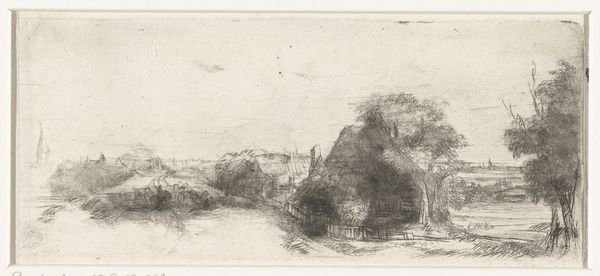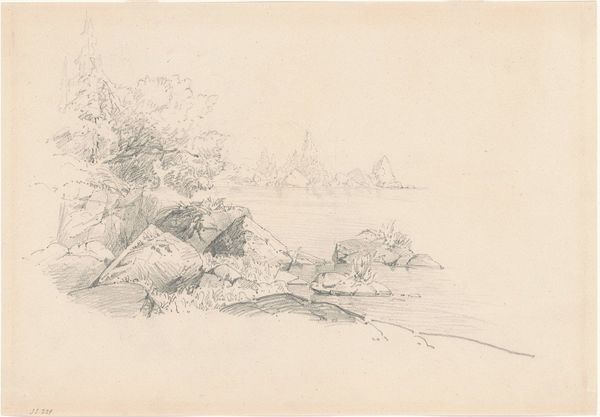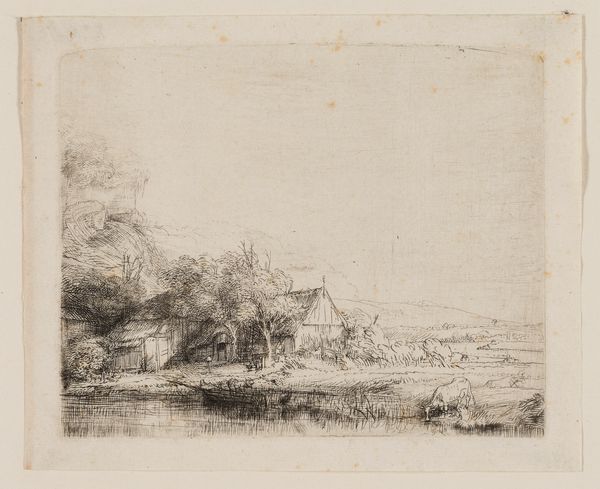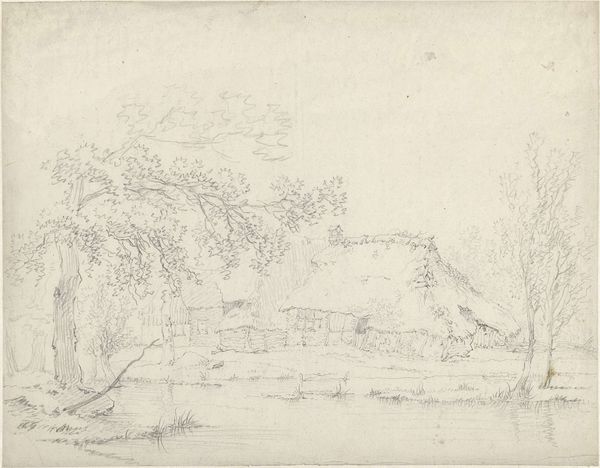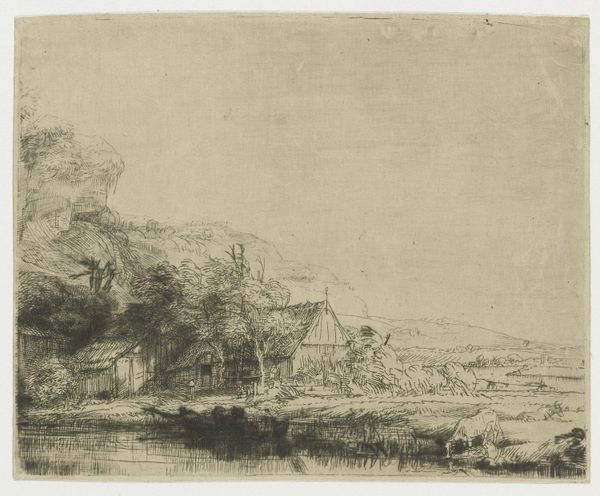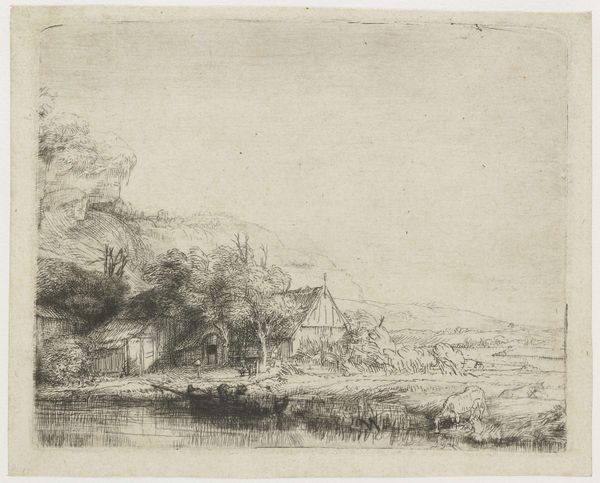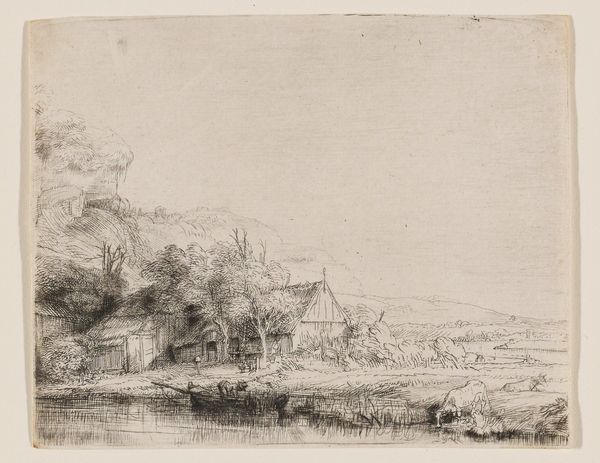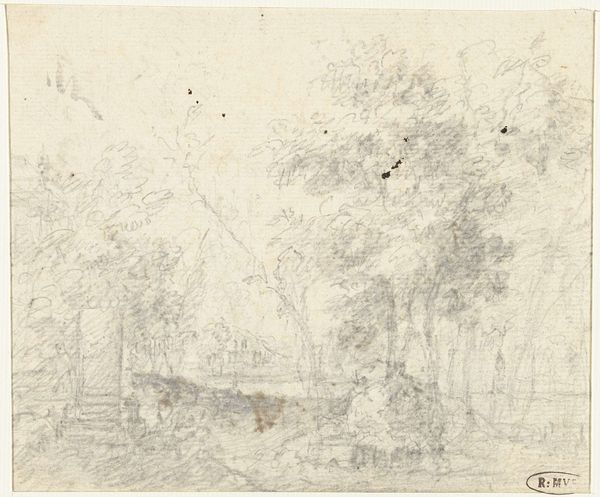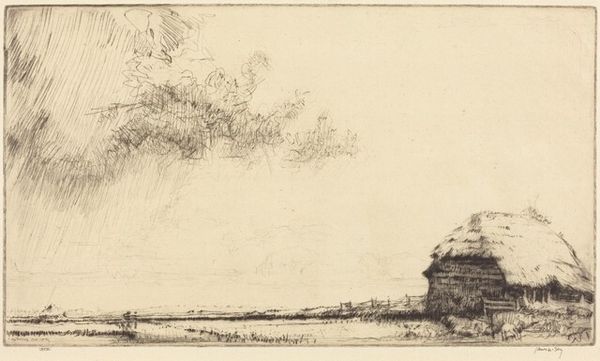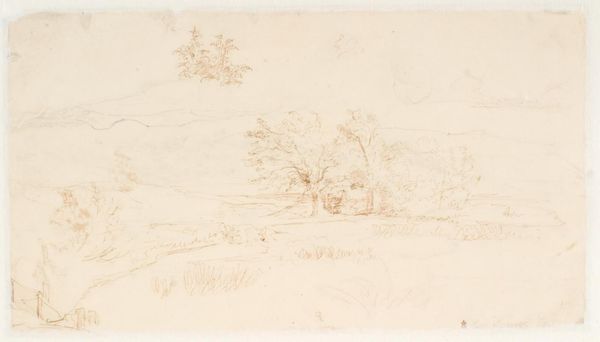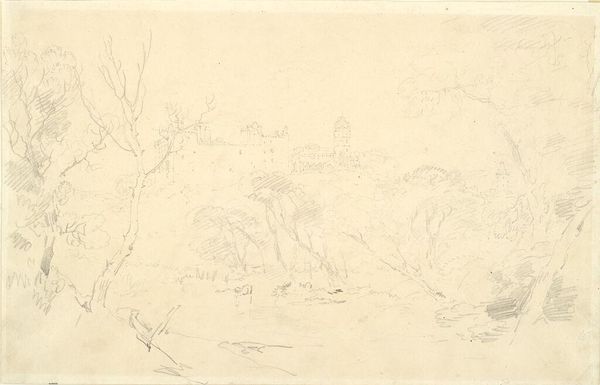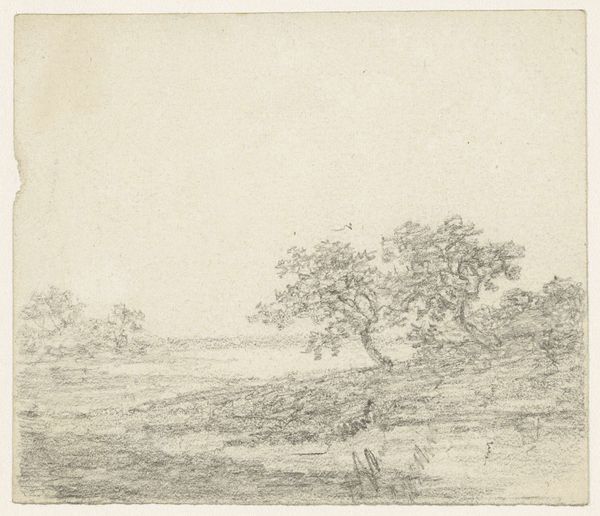
drawing, print, etching
#
drawing
#
dutch-golden-age
# print
#
etching
#
landscape
#
etching
#
realism
Dimensions: height 104 mm, width 131 mm
Copyright: Rijks Museum: Open Domain
Curator: Here we have Rembrandt van Rijn's etching, "Landscape with a cow drinking," created around 1650. It’s a quiet scene, isn't it? Editor: Quiet, yes, but also profoundly… ordinary. Not at all what one expects from Rembrandt, perhaps? The almost casual use of line makes me wonder about the plate itself, how he treated it, whether it was reworked. Curator: Its seeming simplicity belies a deeper resonance. The cow drinking, for example, evokes pastoral ideals, a kind of primal connection to the land, reflecting a yearning for simpler times, particularly potent in the turbulent 17th century. It almost reads as an allegory of contentment. Editor: An allegory perhaps constructed through very particular techniques. See how he uses the etching needle? So free in places, almost haphazard near the top of the image, while denser, more controlled strokes define the architecture. It suggests he prioritized the built environment, emphasizing human labor and impact. What inks would he have used, do you suppose? Curator: Probably an iron-gall ink. Its fading lends the scene this dreamlike quality now. It adds to the symbolism of memory. The cow itself is also noteworthy. Throughout various mythologies, the cow is linked to motherhood, abundance, and the life-giving force of nature. Consider Isis, or Hathor in the Egyptian traditions, both intimately tied to bovine imagery. Editor: And yet, seeing this cow positioned so far from the settlement—a detail that speaks volumes about resource management, the landscape shaped by human and animal activity. The river’s placement, as both a source of life and division in the composition—how much did water impact Rembrandt's local landscapes? Curator: Immensely. Waterways were central to Dutch life, essential for transport and trade, also representing fluidity, the passage of time and… purification. Perhaps this cow isn't just drinking water; maybe it's drinking from the very source of renewal? Editor: Maybe, but what tools did he employ to generate that range of grays? Which biting times did he use, and which acids? The success of etching lies within the means, don’t you agree? The idea and its fulfillment existing together at the moment of creation... Curator: It's inarguable. Seeing those dark and light tones you noticed and associating them to a cultural understanding certainly reveals something hidden in plain sight, a story woven with intention and artistry. Editor: Indeed, by carefully analyzing the methods of this Landscape and linking that knowledge to broader themes, a materialist interpretation is also possible to give us additional views.
Comments
No comments
Be the first to comment and join the conversation on the ultimate creative platform.
